Charcoal figure drawing is a captivating form of art that breathes life into the simple black and white medium. Through its dynamic range of textures and tones, charcoal allows artists to explore the depth and complexity of the human form in a way that few other mediums can. This article delves into practical strategies and techniques to master charcoal figure drawing, helping artists at any level add vibrancy and realism to their human form artworks.
Laying the Foundation
Choosing Your Charcoal and Paper Wisely
The first step in any charcoal figure drawing endeavor is selecting the right materials. Opt for a mix of vine and compressed charcoal to achieve a variety of lines and shades. Vine charcoal is ideal for quick sketches and lighter shades, while compressed charcoal provides the depth needed for darker areas. Pair these tools with high-quality, toothy drawing paper that can hold the charcoal without smudging unnecessarily.
Mastering Proportions and Anatomy
Before diving into shading and texturing, getting the proportions and anatomy of your figure correct is crucial. Start with basic shapes and lines to map out the overall form, gradually refining these into more detailed body parts. Practice drawing different poses and body types to understand how anatomy changes with movement and perspective. This foundational knowledge will serve as the backbone of your charcoal figure drawings.
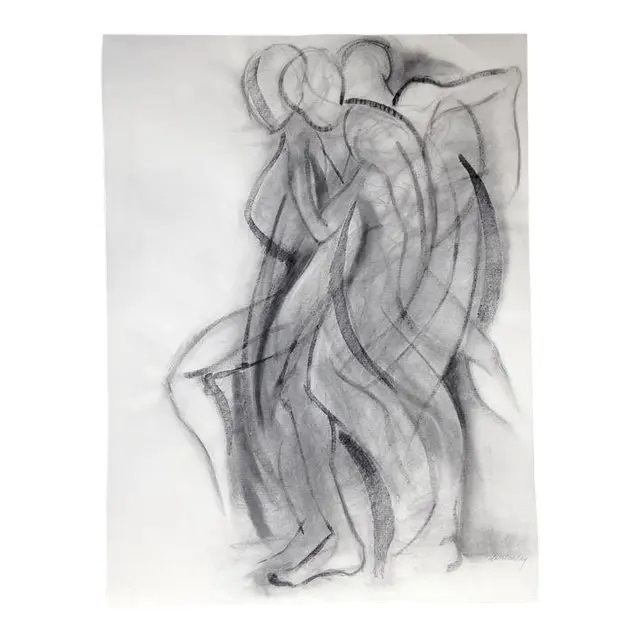
Enhancing Depth and Realism
Utilizing Light and Shadow
Light and shadow are your most powerful tools when working with charcoal. Observe how light falls on the subject and where the deepest shadows form. Use charcoal’s inherent versatility to create strong contrasts, which will add volume and a sense of three-dimensionality to your figure. Apply charcoal lightly for areas lit by the light source, and press harder or layer more charcoal for shadows and darker areas.
Achieving Texture and Detail
Texture in figure drawing can convey the feel of skin, hair, fabric, and more. Use a combination of smooth blending with your fingers or blending stumps for skin areas, and leave some parts less blended for a rougher texture like hair or fabric. To add finer details, such as facial features or the texture of clothing, sharpen your charcoal pencil to a fine point. These textures and details will bring your figure to life, making it more realistic and compelling.
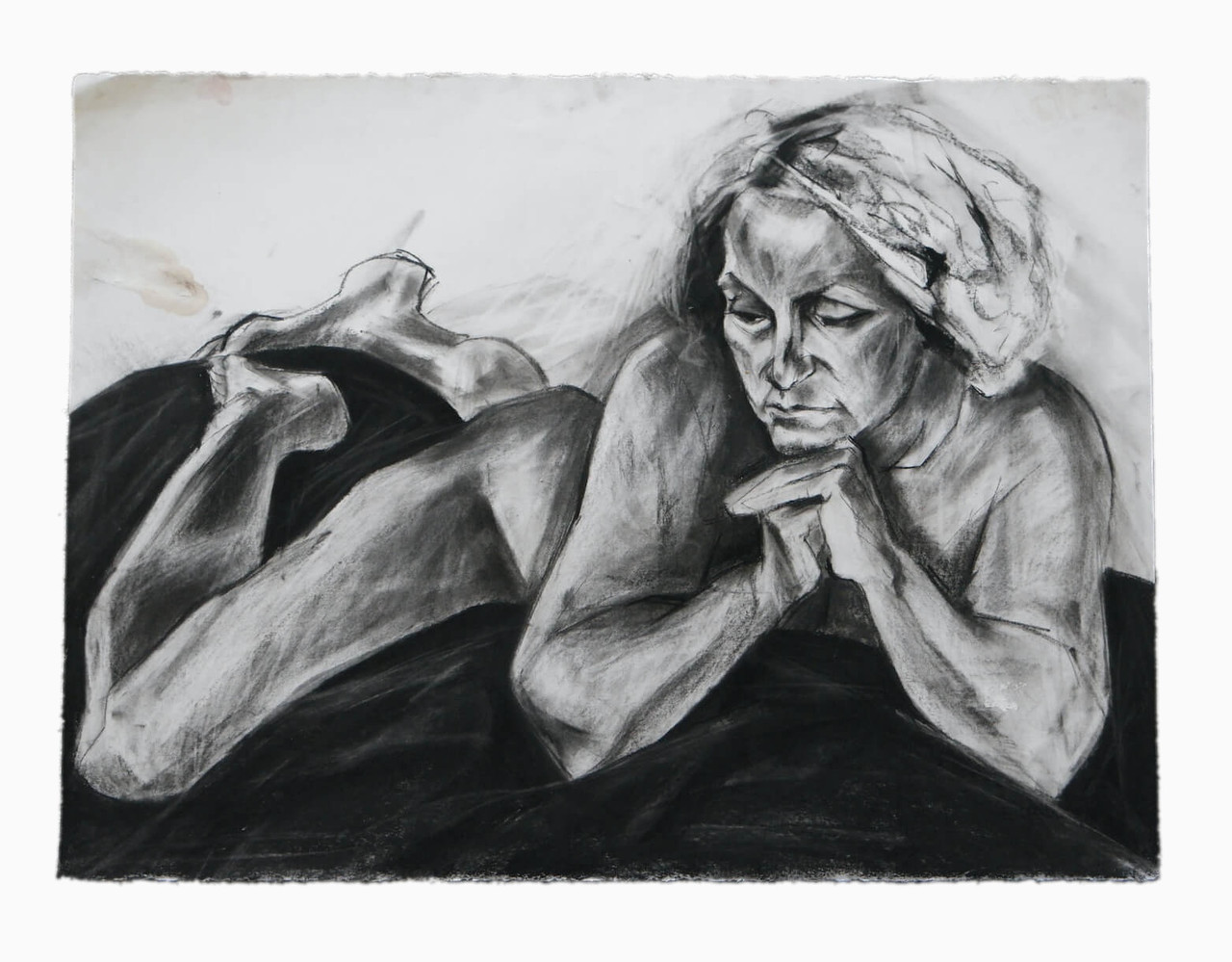
Capturing Movement and Emotion
Depicting Dynamism and Motion
One of the most challenging aspects of figure drawing is capturing movement. To convey motion, focus on the flow and direction of limbs and the torso. Use swift, confident strokes to suggest movement, and allow some lines to be more gestural, hinting at the continuation of motion beyond the frame. Capturing movement will infuse your drawings with a lively energy that static poses lack.
Conveying Emotion through Expression and Posture
The human form is a powerful vessel for expressing emotions. Pay close attention to facial expressions, body posture, and hand gestures as they can tell a compelling story or evoke a specific mood. Even in the absence of detailed facial features, the positioning of the body and limbs can suggest a wide range of emotions. Use charcoal’s expressive capability to enhance these elements, breathing life into your figure drawings.
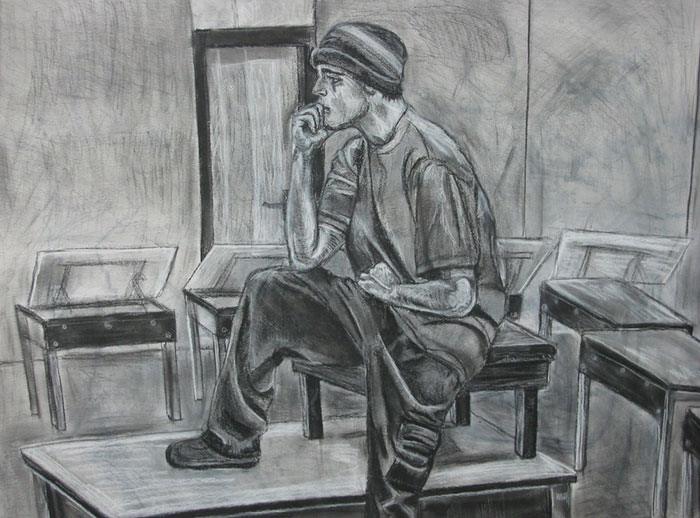
Refining Your Skills
Continuous Practice and Experimentation
The key to mastering charcoal figure drawing is consistent practice and a willingness to experiment. Draw regularly, challenging yourself with a variety of poses, lighting conditions, and expressions. Don’t be afraid to step out of your comfort zone and make mistakes—each drawing is a learning opportunity.
Learning from Masters and Peers
Study the works of masters in charcoal drawing and contemporary artists to find inspiration and learn different approaches to figure drawing. Participating in art classes or workshops can also offer valuable feedback from peers and instructors, helping you refine your technique and approach to figure drawing.
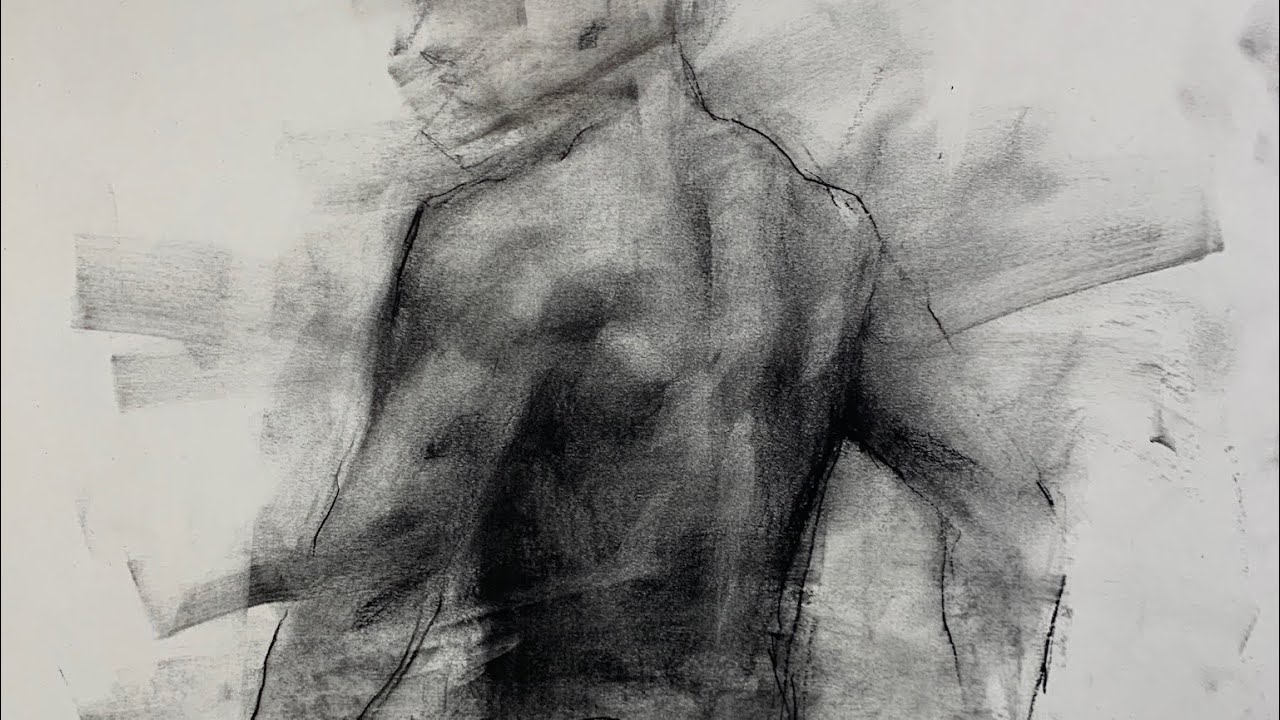
Perfecting Your Approach
Embracing the Unpredictability of Charcoal
Charcoal as a medium is both forgiving and unpredictable, which can be leveraged to bring spontaneity into your figure drawings. Embrace this characteristic by allowing for happy accidents to occur. Sometimes a smudge or an unintended mark can add an unexpected depth to your piece. As you work, adjust your grip on the charcoal to vary line weight and texture. This looseness in technique will give your figures a sense of vitality that tight control often lacks.
Balancing Precision and Freedom
In charcoal figure drawing, there is a fine line between accuracy and artistic license. Strive to balance these two by laying down accurate proportions first and then using freehand strokes to build the form. Do not become too beholden to precision that your work is stiff, nor too free that the figure loses its believability. Precision gives structure to your drawing, while freedom infuses it with energy. Blend both approaches to create a dynamic and compelling representation of the human form.
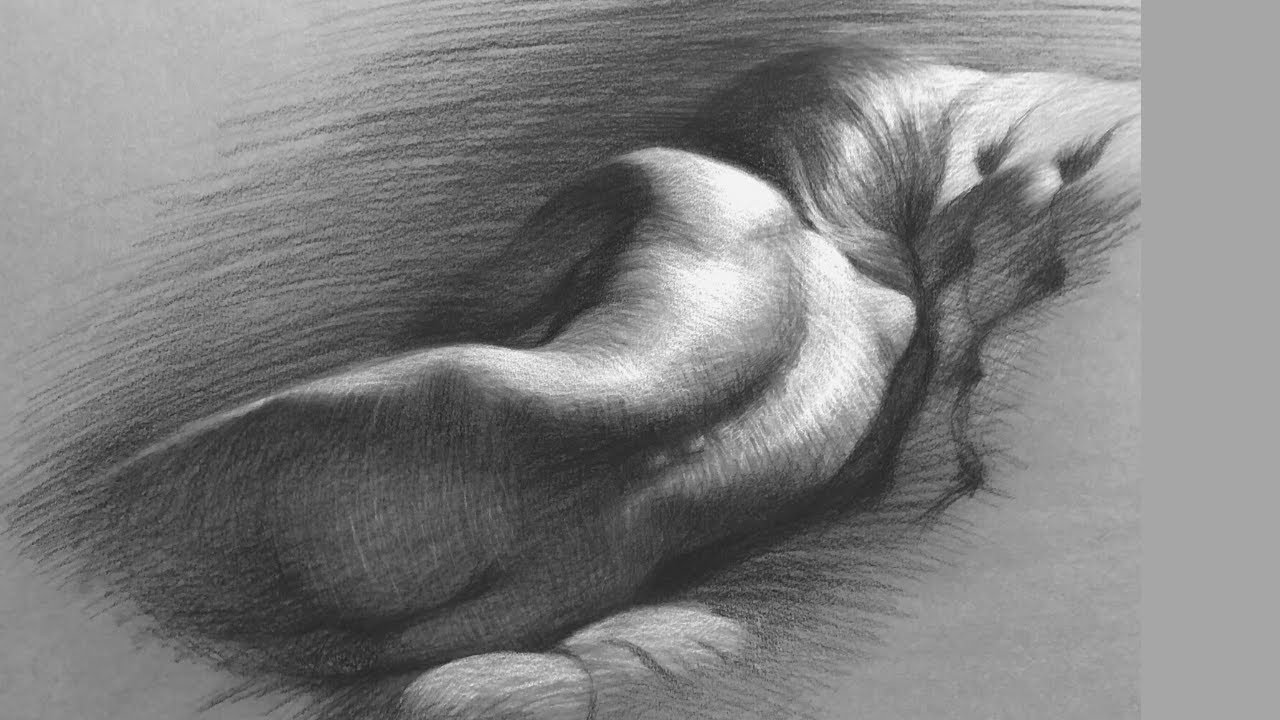
Finalizing Your Composition
Adding Background and Foreground
To make your figure pop off the page, consider the space that surrounds it. A well-placed background or foreground can provide context and enhance the focal point. Use a light touch to suggest an environment; this ensures that the figure remains the central focus. Employing negative space effectively can also add to the composition’s overall impact. Think about where you place the darkest and lightest values, as this contrast will naturally attract the eye.
Review and Touch-up
Once your drawing nears completion, step back and review it from a distance. This perspective allows you to see the composition as a whole and identify areas that require fine-tuning. Make final adjustments, strengthen shadows, or lighten areas if needed to achieve the desired balance and impact. Use a kneaded eraser for gentle lightening or to create highlights that draw attention to specific features. Touch up the details that will tie the entire piece together, ensuring that all elements work harmoniously.
Drawing to a Close
Protecting Your Work
After putting so much effort into your charcoal figure drawing, it’s essential to protect it. Spray a workable fixative over the drawing to prevent smudging and to fix the charcoal in place. This step will also allow you to add more layers later on if you choose to adjust your work further. If you’re completely finished, a final fixative layer can be applied to ensure long-term preservation.
Reflect and Grow
Once your drawing is complete and preserved, take time to reflect on the process. Analyzing what worked well and what could be improved will set you up for success in future drawings. Keep your practice consistent and always be open to learning from others and your own experiences. Charcoal figure drawing is an art that evolves with every creation, continually challenging and inspiring the artist within you.
Mastering the art of charcoal figure drawing is a rewarding journey that combines technical skill with creative expression. By focusing on the foundational elements of proportions and anatomy, and then moving on to explore depth, realism, movement, and emotion, artists can produce strikingly lifelike and expressive drawings. Through continuous practice, experimentation, and learning from others, you can bring the human form to life with charcoal, capturing its nuanced beauty and complexity.